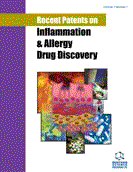Abstract
Background: Fentanyl is primarily an opioid agonist. It is frequently used in general anesthesia as a potent analgesic. It can be administered either orally, transdermally or systemically. Adverse effects due to opium alkaloids are usually because of a non-specific histamine release. Only in a few cases, a true allergy mechanism could be involved. Immediate reactions to opioids are most frequent than delayed reactions. In the past years, delayed reactions have increased in frequency because of the wide use of Transdermal Therapeutic System (TTS) with several opioids for its potent analgesic properties.
Objective: The objective was to study delayed reaction to fentanyl TTS and cross-reactivity with other opioids.
Methods: A 52-year-old man with a diagnosis of pancreatic cancer who began treatment for a bone metastases pain with fentanyl TTS, at a dose of 50 micrograms per hour (mcg/h) is the subject of the study. After 10-15 days of treatment, he developed an itchy papulovesicular rash in the application site of the fentanyl TTS. Afterward, eczema and superficial desquamation just on the application site of the patch were observed. He changed several times the site of application, but always developing the same symptoms in every single application. Later on, he tolerated other opioids such as oral morphine or tramadol. An allergy workout was performed. We performed Patch Tests (PT) with fentanyl at a concentration of 10% in aqua (aq) and with buprenorphine 10% aq., in order to investigate probable crossreactivity among other topical opioids.
Results: Readings were recorded at day 2 (D2) and day 4 (D4), with positive PT only with fentanyl at D2 (+++) and D4 (+++). We decided to perform a single-blind challenge test with buprenorphine 35 mcg/h in TTS, with a negative result. At this moment, fentanyl TTS was replaced by buprenorphine TTS, with good tolerance.
Conclusion: We present the case of Allergic Contact Dermatitis (ACD) due to hypersensitivity to fentanyl with good tolerance to buprenorphine. Positive PT in this patient suggests a type IV hypersensitivity mechanism. Allergic reactions to opioids are frequently immediate, but delayed reactions could appear, especially when the drug is administered topically.
Keywords: Allergic contact, buprenorphine, dermatitis, fentanyl, patch test, transdermal therapeutic system.
[http://dx.doi.org/http://dx.doi.org/10.1016/j.jaip.2017.03.035] [PMID: 28550985]
[http://dx.doi.org/http://dx.doi.org/10.1111/j.1399-6576. 2009.02022.x] [PMID: 19496758]
[http://dx.doi.org/http://dx.doi.org/10.2310/6620.2006.05051] [PMID: 16956462]
[PMID: 21781635]
[http://dx.doi.org/[http://dx.doi.org/10.1034/j.1600-0536.2002.460513.x]] [PMID: 12084088]
[http://dx.doi.org/[http://dx.doi.org/10.1111/j.1600-0536.2008.01472.x]] [PMID: 19076888]
[http://dx.doi.org/[http://dx.doi.org/10.1177/1049909109346427]] [PMID: 19801533]
 30
30 6
6 1
1 1
1


















